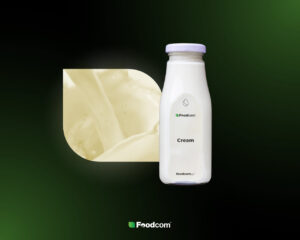- Skimmed Milk Powder and Gouda cheese markets experience fluctuations and varying levels of demand.
- The Butter and cream sectors show slight changes, influenced by regional dynamics and seasonal factors.
- The Irish dairy sector faces challenges due to impending nitrate regulation changes, potentially affecting herd sizes.
Hello Partners!
Welcome back to our Newsletter!
This week’s dairy market report highlights key trends and challenges. Skimmed milk powder and Gouda cheese markets show price fluctuations and varying demand levels. Butter and cream markets experience slight changes, influenced by regional dynamics and seasonal factors. The Irish dairy sector faces regulatory pressures impacting herd sizes, while genomic testing significantly enhances the genetic quality and profitability of the UK’s dairy herd.
Let’s take a look at what else is happening in the dairy market!
Skimmed Milk Powder
Prices for Skimmed Milk Powder for bulk feed have eased slightly and currently stand at between 2250 and 2300 EUR/MT, both for spot transactions and for deliveries in the third quarter. Additionally, the market for food-grade Skimmed Milk Powder is calm with prices between 2350 and 2450 EUR/MT FCA. Availability remains good, with a notable decrease in demand compared to last week.
Cheese
The Gouda market is particularly weak, and spot prices have fallen to 3800-3900 EUR/MT FCA. The market for Gouda is described as dead, indicating very low demand. In contrast, demand for Mozzarella remains good, with prices holding steady, reflecting a stable market. Similarly, we see a consistent demand for Cagliata, with prices maintaining a stable level. The Cheddar market is stable.
Fats
Butter prices are stable to slightly declining, with a wide range between 6450 and 6550 EUR/MT. Prices for 10 kg packages are quoted at around 6700 EUR/MT. Last week began with a slight increase in prices, which then tapered off towards the end with modest declines. Regionally, we observed variations in market dynamics; some areas experienced slower availability coupled with higher demand, while other regions saw the opposite, indicating a diverse and fluctuating market landscape.
Additionally, the demand and prices for Anhydrous Milk Fat (AMF) and Butter Oil remain stable, reflecting a steady market condition.
Liquids
Cream prices are stable to slightly rising and are currently at 7700-8000 EUR/MT. Throughout Europe, there have been noticeable fluctuations, but the good weather conditions are contributing to sustained demand, which reflects the positive market dynamics.
Skimmed Milk Concentrate prices have risen and are now between 2050 and 2100 EUR/MT FCA. The upward trend is due to strong demand, indicating robust market conditions.
There is a noticeable decrease in the availability of Raw Milk in the market, signaling the onset of the warm summer period. This seasonal trend often leads to lower Milk production as temperatures rise, affecting dairy supply dynamics.
Whey powders
Prices for bulk Sweet Whey Powder DAP Netherlands are reported to be around 670-700 EUR/MT for Q3. Market activity remains limited, indicating a stable but calm market environment. Generally, prices for Sweet Whey Powder (SWP) intended for food use across Europe are stable, with good availability. No significant price fluctuations are anticipated in the near term, suggesting that this steady trend is likely to continue.
The Sweet Whey Concentrate market remains unchanged, with average prices between 200 and 300 EUR/MT FCA, with some transactions reaching up to 400 EUR/MT.
What else?
Over 40,000 Irish dairy cows are at risk due to impending nitrate regulation changes, prompting urgent calls for government intervention to avert an “animal welfare catastrophe.” New EU limits will reduce allowable nitrates from 250 kg to 220 kg per hectare starting next year, necessitating a reduction in herd sizes. To mitigate this, the Irish government is exploring wastewater management solutions, including a 70% grant aid for slurry storage facilities, to avoid culling the animals. This adjustment is part of broader efforts to address environmental concerns associated with dairy farming.
Genomic testing of dairy heifers is markedly boosting the genetic quality of the UK’s national dairy herd, as revealed by the Agriculture and Horticulture Development Board (AHDB). The latest analysis shows a significant £193 difference in the Profitable Lifetime Index (PLI) between the most and least engaged herds. Herds that genotype 75-100% of their heifers boast an average PLI of £430, compared to £237 for those testing fewer calves. This genetic enhancement could lead to over £50,000 in additional profits for a typical 175-head herd. Furthermore, genomic testing has risen sharply, with around 100,000 dairy heifer calves tested last year, projected to reach 35% by the end of the year.
![Market trends, regulations and genomics: the dairy sector’s new landscape! [226th Edition of Foodcom DAIRY Newsletter] Market trends, regulations and genomics: the dairy sector’s new landscape! [226th Edition of Foodcom DAIRY Newsletter]](https://foodcom.pl/wp-content/uploads/2024/06/Foodcom_SA_Dairy_Newsletter_4-1520x760.jpg)




![South African macadamia growers seek new markets after announcement of US tariffs [World News] South African macadamia growers seek new markets after announcement of US tariffs [World News]](https://foodcom.pl/wp-content/uploads/2025/03/News-world_4-600x300.png)

